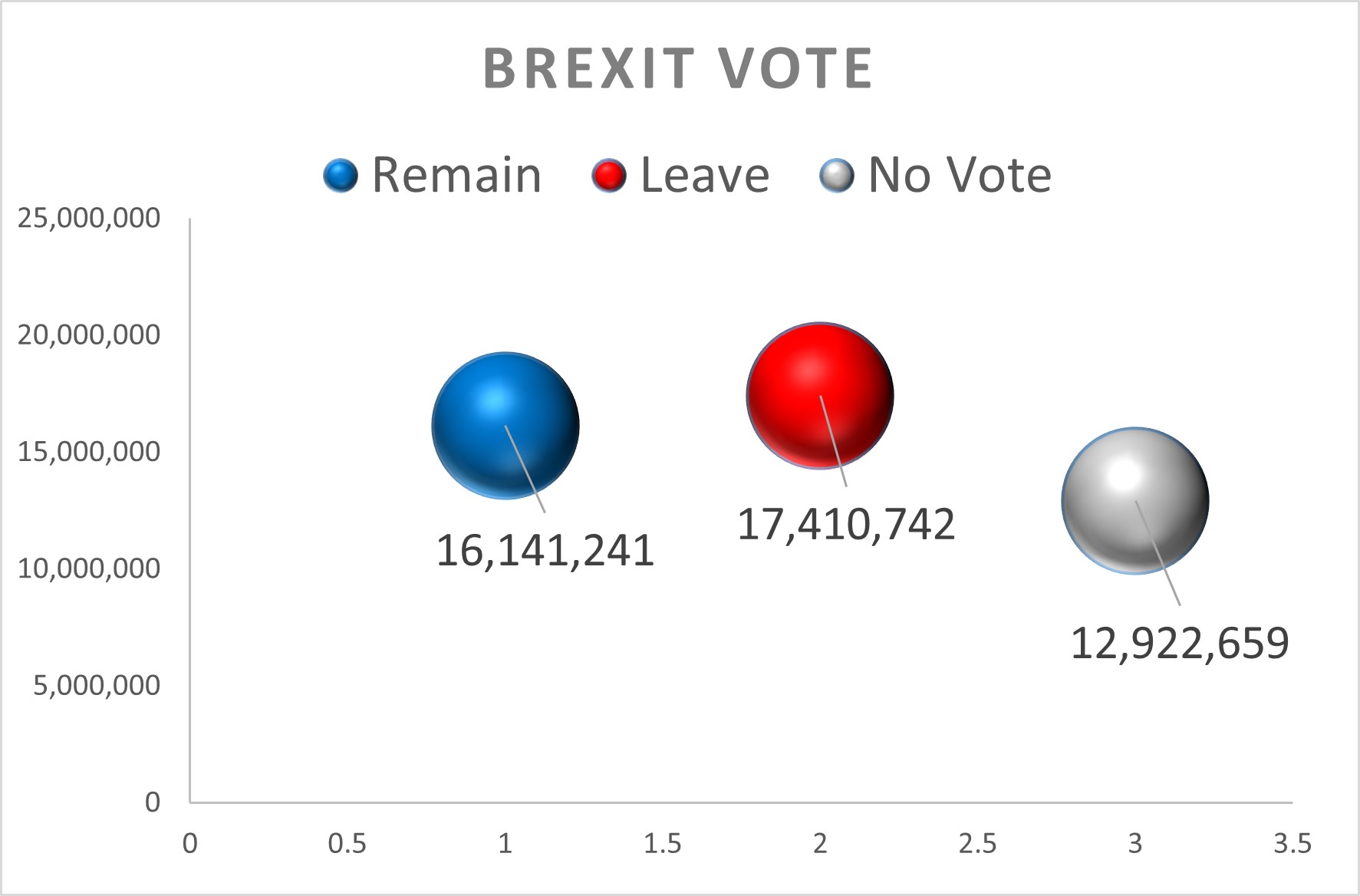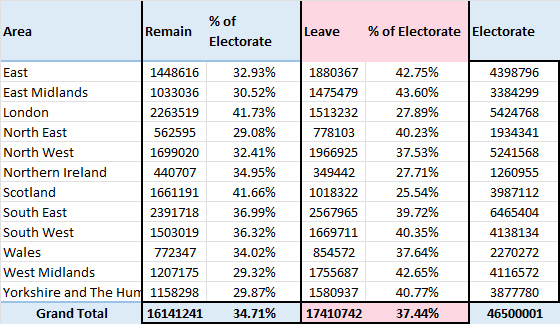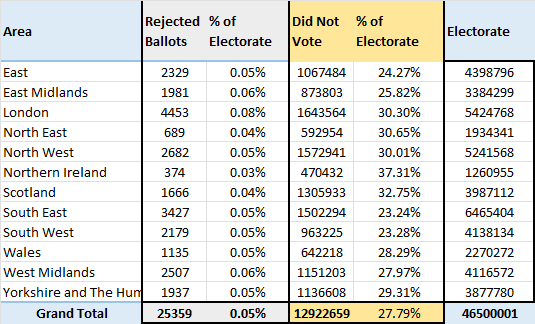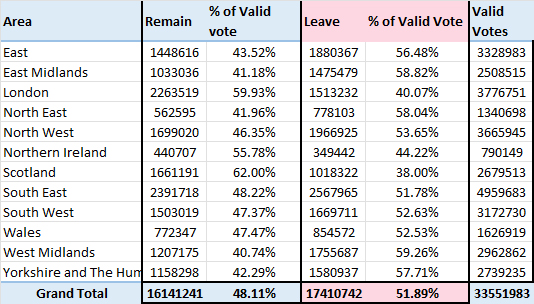Brexit: The Will of the People?
A statistical resource for cross-curricula discussion
European Union Referendum Bill 2015-16
The referendum took place on Thursday 23rd June 2016.
The United Kingdom was split into 382 voting areas, with the results presented as 12 regions.
The electorate was 46,500,001 people and the turn out was 72.2%

- 34.71 % of the electorate voted to Remain
- 37.44 % of the electorate voted to Leave
- 27.79 % of the electorate did not vote
The valid vote was 33,551,983 ( 72.15% of the electorate)
- 16,141,241 voters (48.11 % of the valid vote ) opted to Remain
- 17,410,742 voters (51.89 % of the valid vote ) opted to Leave
The difference between Leave and Remain was just 1, 269,501 ( 3.78% of the valid vote , 2.73% of the electorate)
Was Brexit really the will of the people ?
Points for discussion
The four nations of the United Kingdom of Great Britain voted differently :
- England : Apart for London, voted to Leave
- Northern Ireland : Voted to Remain
- Scotland : Voted to Remain
- Wales : Voted to Leave
This was an advisory, non-legally binding referendum.
No threshold was specified for the outcome of the referendum, unlike the 1979 Scottish devolution referendum which required that 40% of the entire electorate should be in favour for any change to take place.
In the referendum of 1 March 1979, the devolution scheme was supported by 52% of those voting. This amounted to only 33% of the electorate so the scheme could not go ahead. Scottish Parliament Website
To stop Parliament debating a Brexit deadline of October 31st 2019 Boris Johnson unlawfully ordered that Parliament was prorogued .
The UK left the EU and entered a transitional period on 31st January 2020 .
On 31 December 2020, the transition period ended and the United Kingdom left the EU single market and customs union.




